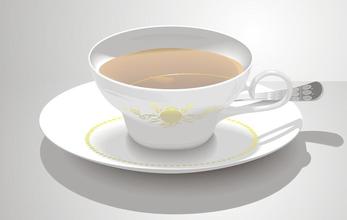Coffee automatic grinder, the bigger the scale, the finer the powder?-which is better for coffee bean grinder?
Coffee automatic grinder, the bigger the scale, the finer the powder?-which is better for coffee bean grinder?
Different bean grinders have different adjustment dials, so you should check the model of the coffee grinder and read the instructions carefully to determine the direction and strength of the dial. In general, if you keep in the habit of checking the settings of the bean grinder, you only need to make very small adjustments. As long as you move the turntable within 3 mm, you can change the thickness of the powder. Although 3mm is a very small number, the grinding time of the same coffee beans will change by 3-5 seconds to determine the direction you need to adjust (finer or thicker). Make sure there are enough coffee beans in the warehouse, and the valve between the warehouse and the sharpening knife is opened so that the coffee beans can fall smoothly into the grinding area.
Turn on the grinder for 10 seconds and discard the coffee powder (these are coffee powders that have not been adjusted).
Use the coffee powder to make a cup of coffee to ensure the accuracy of the steps of serving, flattening and pressing powder. The traditional method of making espresso (Ristretto) uses a water / flour ratio of 1:1 (i.e. 18 grams of coffee powder is used to make 18 grams of coffee) or 1:2 (i.e. 18 grams of coffee powder is used to make 36 grams of coffee), while a regular espresso uses a water / powder ratio of 1:2 (i.e., "Normale"). Test the quality of the coffee and the extraction time. Constantly adjust the dial to make the powder reach a perfect thickness.
When you do this, most brands of bean grinders on the market will store 60g ground coffee powder. According to our experience, you need to store at least 100g of coffee powder in the bean grinder before you can start debugging the machine, and the debugging effect is more obvious. So, you need to make at least three more espresso before you start debugging the bean grinder, and when you're done, you have to make at least five or more cups of coffee. This is very important! The last thing you want to do is go back to work and then retest and debug your machine when you need to decide whether to re-clean the coffee mill. In order to ensure the quality of coffee, if your debugging range is more than 2 scales, you need to thoroughly clean your bean grinder. Although we don't want to waste coffee, according to our experience, the effect is better after cleaning the bean grinder.
[analysis results]
If you get the results you want, congratulations! But remember, this is just the beginning. Ensuring the accuracy of the data in the test does not guarantee the perfect quality of your coffee, but it is still a shortcut for you to pursue the best quality of your coffee! If you successfully use this method to calculate the formula for one type of coffee, you can start testing the data needed to make other varieties of coffee, such as drip coffee. Then you will know which data are useful and which are not.

Important Notice :
前街咖啡 FrontStreet Coffee has moved to new addredd:
FrontStreet Coffee Address: 315,Donghua East Road,GuangZhou
Tel:020 38364473
- Prev

Video introduction on how to use maintenance and cleaning Agent for Merlot Coffee Machine
- Next

Merlot Coffee Machine Cleaner how to use instructions maintenance video tutorial introduction
Merlot coffee machine cleaning agent how to use manual maintenance video tutorial introduction vinegar cleaning to achieve satisfactory results should be washed with pure water and then continue to rinse until the water does not have any smell. Add 2 cups of water to the water tank, then add 50ml vinegar, then drip one cup according to the coffee-making procedure, let it stand for 20 minutes, then start to clean all the water in the tank, turn off the machine 5.
Related
- What is the Philharmonic pressure? How to use Philharmonic pressure to make delicious coffee
- Why does a hand grinder have more fine powder than an electric grinder?
- In addition to the hot mom, what is the difference between the versions of EK43 | ditting and Mahdi ek43?
- What kind of equipment do you need to make coffee by hand? Introduction to novice starter cooking equipment tools
- Espresso needs to be ground how thick and thin scale entry Italian Coffee Machine Bean Grinder investigation and Grinding course
- How much does it cost to open a small private cafe? How much does it cost to learn coffee? How to operate it?
- The difference between the flavor characteristics of hand-brewed coffee and coffee maker is hand-brewed coffee really better than coffee maker? Can I use a coffee machine to make coffee beans by hand?
- The difference between 01 and 02 of hario v60 filter cup what is the difference between 01 and 02 filter cup opening and cooking flavor
- What's the difference between the smart cup and the French kettle? Which is better, the French kettle or the Smart Cup?
- What's the difference between a smart cup and a V60 filter cup? The difference between the taste of smart cup and hand-brewed coffee

